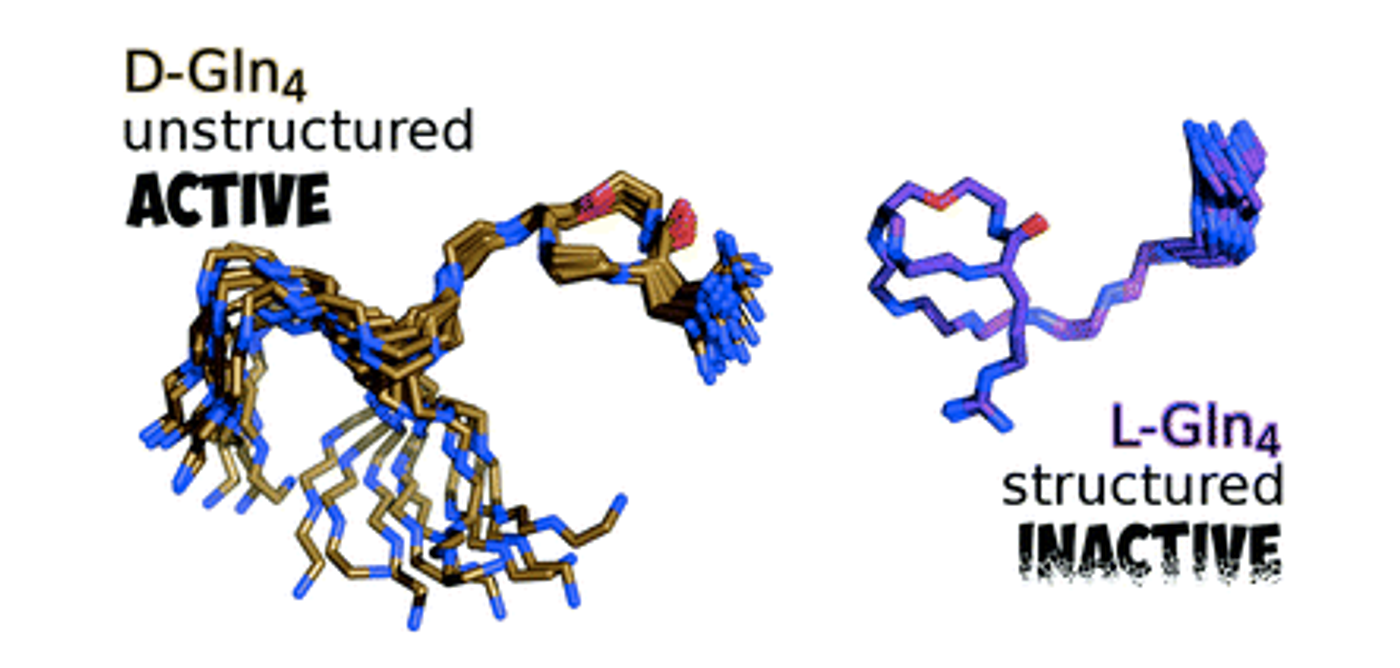Structure of new Antibiotic Shown to be Relevant to Mode of Action
A new antibiotic, teixobactin, was identified a few years ago. It can kill bacteria and has not been shown resistance by pathogens. It's the first new drug taken from bacteria in many years, and seems to represent a new class of drugs. Revealing more about how it works could aid researcher striving to develop more drugs that can tackle antibiotic resistant superbugs, an emerging public health threat. A team working at the University of Lincoln, UK, has had past success creating two synthetic derivatives of teixobactin. That research group has now reported the molecular architecture of the teixobactin molecule in the the Royal Society of Chemistry journal, Chemical Communications.
"The increasing level of antimicrobial resistance represents a major global health challenge. The discovery of the highly potent antibiotic teixobactin to cope with this growing problem has provided a much-needed impetus to antibiotic research around the world. Although teixobactin does not mitigate all problems related to antimicrobial resistance, it is a definite step in the right direction, and our research continues to work towards this vital end goal," explained team leader Dr. Ishwar Singh, of he School of Pharmacy at University of Lincoln, UK.
U.S. investigators found teixobactin in microbes that live in soil in 2015. Soil has been a rich resource for antibiotics since the 1940s. However, it's not practical to use soil to make antibiotics on a large scale; scientists have to develop methods for manufacturing these molecules so they will be useful on a large scale. This new work characterizing the structure of the molecule also provides some insight into its mode of action, and it has demonstrated powerful efficacy in mice. Researchers are working on getting it to use in humans, and this work helps pave the way.
The research team found that the antimicrobial efficacy of teixobactin is directly connected to its lack of a rigid structure. The relatively unstructured nature of the molecule is critical to how it works on the biological level. This has been confirmed by the lack of effectiveness seen in more structured types of the teixobactin antibiotic. The scientists also figured out a way to retain flexibility in the molecule through the creation of chemical derivatives. "We successfully defined the molecular structure of seven teixobactin analogues," said Singh. "This enabled us to understand the importance of the individual amino acids within the antibiotic, and to understand the contribution they each make to the molecular structures of teixobactin. We found that one particular amino acid (D-Gln) is essential and another (D-Ile) is important for maintaining the disordered structure of teixobactin, which is imperative for its biological activity."
"By exploring the structures of different versions of teixobactin we are, for the first time, able to begin to understand how this molecule works. This knowledge will enable us to produce different forms of teixobactin more easily and on a larger scale with potentially better pharmaceutical properties," commented Taylor.
Hear more about the teixobactin antibiotic in the following video.
Sources: AAAS/Eurekalert via University of Lincoln, Chemical Communications









